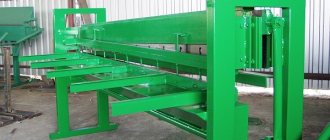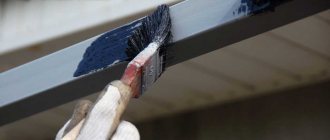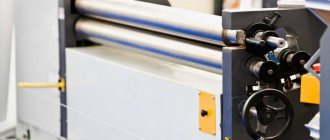Galvanizing of metal is one of the highest quality methods of corrosion protection. Metal products can be used in aggressive environments, in contact with air, polluted atmosphere, and water. At the same time, the oxidation process begins and the metal gradually begins to rust.
The presence of rust causes the product to lose its strength and quality and may collapse over time. The only method of protecting steel from corrosion and significantly increasing the duration of its use is often galvanizing.
The galvanizing process involves applying a smooth, high-quality film of zinc to the surface, which would repel external threats. But it can only be applied if the material is properly prepared.
Since galvanizing is inexpensive, can be done quickly, and provides a noticeable increase in protective qualities, many customers use it. Our company regularly carries out this process and guarantees that the quality of the result will fully comply with GOST requirements.
In this article we will consider the issue of preparation for galvanizing, what actions need to be taken so that the surface is perfectly protected from negative external influences.
Why pre-treatment is so important
Failure to comply with the requirements for the initial preparation of the material becomes a violation of technical regulations. In this case, the coating simply cannot be applied evenly and efficiently. The requirement for such preparation is indicated for all categories of parts to which zinc coating will be applied.
There are several surface preparation tasks at once:
- Make the metal smooth and clean. Any defects remaining on the surface can cause the zinc coating to perform significantly worse. Cracks and internal corrosion may occur. This will negate all efforts to galvanize the metal.
- Improving the adhesion characteristics of steel with the coating applied to it. This phenomenon is also called adhesion. It allows you to ensure that the zinc layer is well fixed and the peeling process will not begin over time.
- Elimination of all traces of pre-treatment. Parts can be processed using different methods and washed. As a result, grease, sand, and iron salts begin to accumulate on the surface. If you do not take care of their timely elimination, there is a risk of an additional chemical reaction in which zinc loses its protective properties, or they are noticeably reduced.
Regardless of the purpose for which galvanizing is carried out, the stages of the technological process and GOST requirements must be observed. Our company strictly ensures that the entire process occurs exactly according to standards, without deviations, common errors and violations.
The main stages of preparation for galvanizing
Compliance with the requirements for the preparatory stage is critical to obtaining the desired result. If we consider the whole process briefly, it will consist of the following stages:
- Complete degreasing of the metal surface. Allows you to remove any type of contaminant from it - from organic to various fuels and lubricants.
- Flushing. Eliminates all contaminants, including those remaining after processing. These include sand, foam, and various types of reagents. The goal is to eliminate all factors that could negatively affect the quality of adhesion.
- Etching. The procedure is necessary if, after previous use, or as a result of processing, corrosion, carbon deposits or scale appear on the material.
- Fluxing. Becomes the final step because it allows you to guarantee a significant increase in the adhesion of your material.
It is important to perform all actions correctly, in accordance with the specified technical requirements. In this case, the output is a part with a high-quality film, ready to accept a layer of zinc. There will be no contamination or potential traces of previous treatment on the surface.
Later in this material we will take a closer look at each stage and the requirements that apply to it. This allows you to evaluate the quality of all types of work performed.
Why is acid flux needed?
Metals include highly active substances. Many of them oxidize easily and quickly in the presence of air. The resulting oxides are converted into hydroxides under the influence of atmospheric moisture.
A mixture of oxidation products is clearly visible on iron products after storage in air. It's called rust. Other metals are also coated with an oxide layer, which prevents anything from being soldered to the product.
Acid fluxes help to cope with the problem, the simplest of which is soldering acid. Under this name, several different single-component or complex compositions are collected, many of which can be prepared with your own hands.
Degreasing
The degreasing process is very important in order to ensure that most types of contaminants are removed from the metal surface. Even if the part was delivered from production, there is a risk that various types of oils and organic compounds remain on it, which greatly negatively affect the level of adhesion.
After the product gets galvanized, the specialist assesses how heavily it is contaminated and what the nature of the contamination is. There are a large number of formulations for processing. Moreover, all of them are safe for materials - they do not cause oxidation or other undesirable reactions.
The composition can be very hot to perform degreasing. It is common to use solutions whose temperature ranges from 60 to 80 degrees. This way it is possible to achieve a noticeably better final effect. We use reagents that completely clean the surface when degreasing.
Since the method is combined with washing, it is guaranteed that all reagent residues will be removed without a trace. They will not interfere with further galvanizing of the material - this has been proven in practice.
Do-it-yourself galvanizing
As already mentioned, some types of galvanizing can be done independently at home. This applies to cold galvanizing technology or the electrochemical method.
To perform galvanizing yourself using an electrical method, you need to carefully prepare the surface of the workpiece. Preparation includes:
- cleaning;
- degreasing;
- acid pickling;
- rinsing under running water.
You can make an apparatus for galvanic galvanizing yourself based on a direct current source with a voltage of 6-12 V at a current strength of 2-6 A and a capacitance based on a dielectric device and a device for fixing the product and electrode. Any salt solution containing zinc acts as an electrolyte. To prepare the solution, zinc is placed in a battery electrolyzer and dissolved in it. Before use, the composition is filtered.
When performing galvanizing with your own hands, you need to take into account that the following factors influence the quality and thickness of the coating:
- current density per unit area of the product;
- temperature of the electrolytic solution;
- electrolyte temperature;
- geometry and complexity of the product shape.
Galvanizing metals allows you to slow down the process of corrosion of products. Galvanizing methods depend on the operating conditions of the products. You can galvanize materials at home.
Flushing
Many clients have a firmly established stereotype that contact of metal with water should not be allowed under any circumstances. Moreover, if we are talking about material that has not yet been galvanized.
Water really poses a danger to metal if it comes into contact with it for a long time. The launch of the oxidation process leads to the development of corrosion. At the same time, before galvanizing, you cannot do without washing. Only it allows you to remove all solutions and reagents that were used at the previous stage.
To improve the quality of the result, specially selected compounds are used. They are applied to the surface under pressure, and the part is carefully processed from all sides.
The equipment we install helps prepare even the most complex parts. Remains of contamination will be removed from hard-to-reach places - there will be no obstacles left for further actions.
Removing acid from the body
Having completed cleaning the surface from saffron milk caps, the final stage of surface cleaning begins. This galvanized treatment helps protect the metal from rotting in the future. Corrosion will not spread even in the case of through holes, because they were sealed with zinc.
The list of components required for processing included soda, and so it is needed to remove residual substances from the galvanized surface.
To do this, pour the baking soda into a container of water and mix thoroughly until completely dissolved. Next, soak a rag in the resulting solution and wipe the previously treated areas.
At the final stage, putty is applied, and then the paint is renewed; for this you can use a spray can or a brush. This procedure can also be performed at a car repair shop.
Loading…
Etching
The process of surface etching in the preparation of metal parts is very important. Galvanizing does not always have to be done on materials that are in good condition. Even from production, parts may arrive with numerous surface defects. These include:
- Corrosion.
- Nagar.
- Scale.
In this case, there may be other solid deposits that for some reason could not be eliminated at earlier stages of preparation. All this needs to be removed, because the zinc layer simply cannot adhere to the material.
Many experts note that etching belongs to the category of tasks that in preparation have the greatest impact on the quality of the final result. Our specialists strictly monitor compliance with all technical requirements and regulations at this stage.
The process itself is based on the use of hydrochloric acid. It is poured into a bath, into which the workpiece will then be completely immersed. It is important to control time. It turns out to be sufficient to cope with all contaminants on the surface.
A clear question arises - is there a possibility that the acid, due to its composition, will damage the material and begin to gradually corrode it? This is eliminated through the use of special inhibitor substances that are added to the composition. Even with prolonged contact with metal, no chemical reactions dangerous to its integrity occur.
After the processing is completed, it will immediately become noticeable from the outside that the part has been cleaned. All traces of corrosion, scale and other deposits will be eliminated. The surface will remain smooth and acquire shine. We carefully ensure that the material can be quickly used in further preparation and that no time is lost on completing the stages of the technological process.
Fluxing is a process that should ensure the formation of a thin film on the surface. It performs protective functions and was originally created to prevent oxidation of the material and significantly increase its adhesion. Thanks to this, it is possible to guarantee that galvanizing will take place efficiently and the zinc layer will be well fixed to the material without the possibility of peeling.
To ensure fluxing, our production line uses a special bath. It is filled with a solution containing ammonium and zinc chlorides. The entire solution is heated to a temperature of 60 degrees.
In order to prevent damage to the material, it is very important to monitor the composition of the solution and whether it maintains a constant concentration. Therefore, it is very important to trust the process to professionals with extensive experience - it’s easy to make a mistake, and all subsequent processing after that can go down the drain.
A couple of minutes solves the rust problem
To remove saffron milk caps you will need your own hands and a simple device. You can make it from improvised means:
- batteries;
- knife with a sharp blade;
- electrical insulating tape;
- regular table soda;
- to protect hands - gloves made of durable material.
The list is also complemented by a one-and-a-half cable and several hygienic cotton pads. Purchase phosphoric acid in advance. It is easy to find in radio parts stores.
Regarding batteries, you will need zinc salt cells. The zinc content can be checked easily, just hold a magnet, it should not be magnetic. Then you need to completely remove the cover from the battery with a knife. Next, we wrap the battery case with a wire in a spiral shape, securing it with electrical tape. A cotton pad must be attached to the negative side of the element with electrical insulating tape.
That's it, the device is ready. This takes on average two to three minutes. With this device we will get rid of rust stains and more. They can perfectly galvanize metal surfaces.
The galvanizing process is accelerated if you first throw pieces of zinc taken from disassembled batteries into the acid. Having completely dissolved in acid and been saturated with zinc, the reaction proceeds three to four times faster.
Contact the specialists
Our company provides high-quality galvanizing services. The production line is equipped with all the necessary equipment to create high-quality protection against corrosion on the surface. After the specialists complete the work, it will be possible to use the material outdoors, in contact with water and various types of aggressive environments.
We pay great attention to preparation for hot-dip galvanizing. This ensures that the zinc is firmly attached to the surface and will perform all its protective functions.
We work with any types of parts.
We guarantee our clients compliance with deadlines and high quality results. To calculate the cost and get answers to other questions, leave a request on the website or call us at the numbers provided. Return to articles Share article











